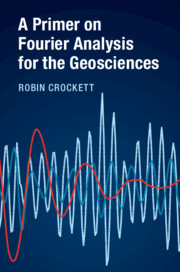Book contents
- Frontmatter
- Dedication
- Contents
- Preface
- Acknowledgements
- 1 What Is Fourier Analysis?
- 2 Covariance-Based Approaches
- 3 Fourier Series
- 4 Fourier Transforms
- 5 Using the FFT to Identify Periodic Features in Time-Series
- 6 Constraints on the FFT
- 7 Stationarity and Spectrograms
- 8 Noise in Time-Series
- 9 Periodograms and Significance
- Appendix A DFT Matrices and Symmetries
- Appendix B Simple Spectrogram Code
- Further Reading and Online Resources
- References
- Index
7 - Stationarity and Spectrograms
Published online by Cambridge University Press: 01 February 2019
- Frontmatter
- Dedication
- Contents
- Preface
- Acknowledgements
- 1 What Is Fourier Analysis?
- 2 Covariance-Based Approaches
- 3 Fourier Series
- 4 Fourier Transforms
- 5 Using the FFT to Identify Periodic Features in Time-Series
- 6 Constraints on the FFT
- 7 Stationarity and Spectrograms
- 8 Noise in Time-Series
- 9 Periodograms and Significance
- Appendix A DFT Matrices and Symmetries
- Appendix B Simple Spectrogram Code
- Further Reading and Online Resources
- References
- Index
Summary
Stationarity, stationary and non-stationary data in the context of time-series analysis and frequency content. Introduction to spectrograms as a means of investigating time-frequency relationships in data. Time and frequency resolution and uncertainty principle. Worked examples with stationary and non-stationary time-series.
- Type
- Chapter
- Information
- A Primer on Fourier Analysis for the Geosciences , pp. 112 - 122Publisher: Cambridge University PressPrint publication year: 2019

